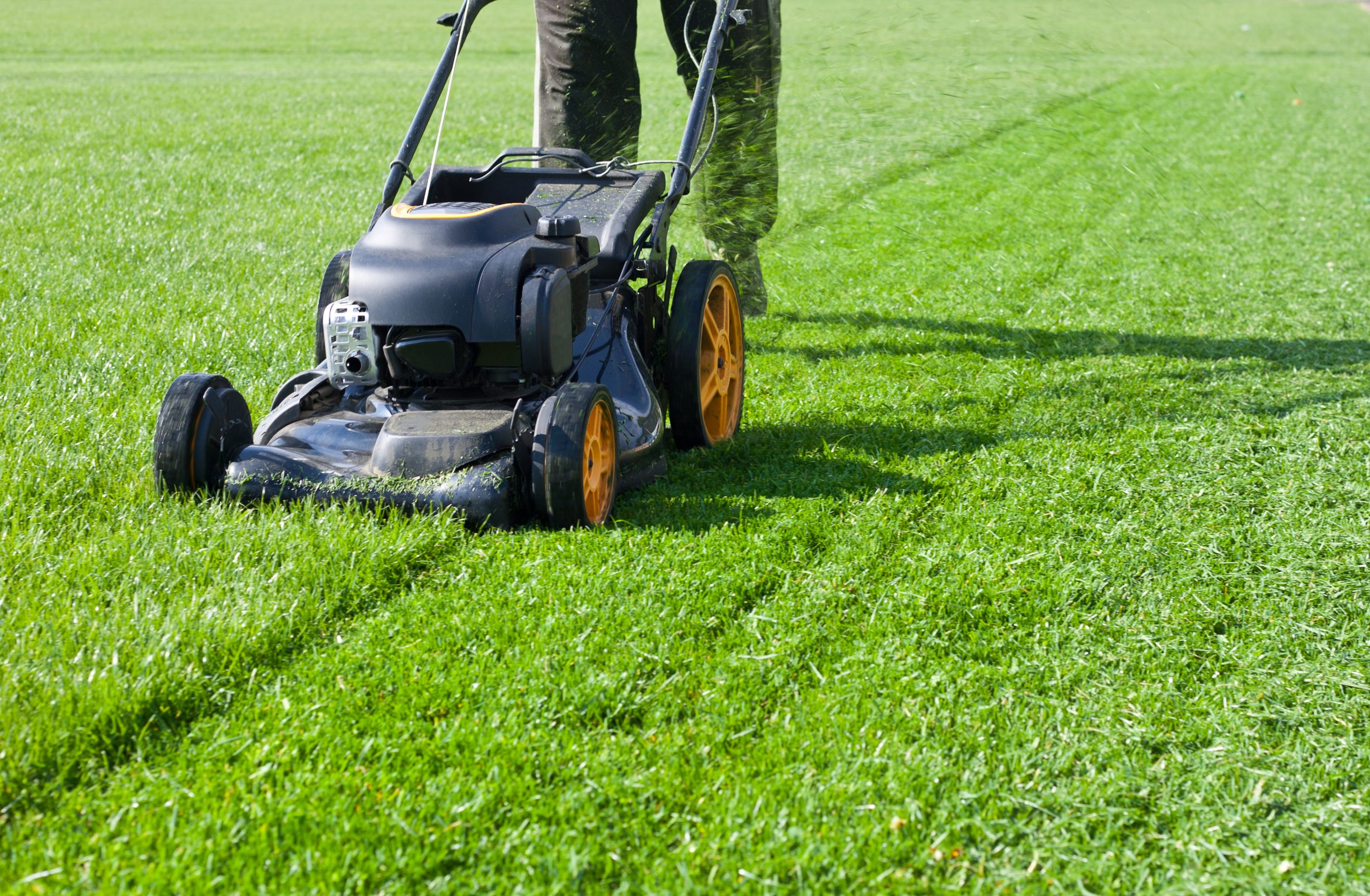Knowing how to mow a lawn can make a difference between a lawn you are proud of and one that looks weak and stressed. Proper mowing leaves your lawn looking finished and attractive, and promotes thick, lush growth. On the other hand, improper mowing makes your lawn more susceptible to environmental stresses such as heat and drought.
WHEN TO MOW
Regular mowing is important for a healthy lawn, but it is not advised to set a firm schedule for mowing your lawn. Mowing frequency or intervals should be based on the growth of your grass as weather, season and type of lawn affect how fast the lawn grows. Warm seasons grasses (Kikuyu, Princess77, LM/Berea, Buffalo) may require fortnight mowing or zero-mowing (severe frost areas) in winter as their growth goes dormant in that season. Whereas, in summer these grasses may need to be mowed every week as optimum growing conditions are met. On the other hand, cool season grasses (All Seasons Evergreen® and Shade Over®) may require frequent mowing in the cool season and less frequent mowing in the midsummer season. The best guideline is to stick to stick to the ideal mowing height and then modify the mowing frequency to avoid removing too much leaf length at a time. As a rule, NEVER REMOVE MORE THAN ONE THIRD OF THE GREEN LEAF AREA AT ANY ONE MOWING. Removing more than this reduces the carbohydrate that support healthy grass growth. If you consistently remove too much leaf at a time, your lawn will become vulnerable to environmental stress, insect pests, diseases and weeds. Scalped lawn tends to be weak and sparse, which exposes soil. The exposure of the soil to sunlight allows weed seed to germinate and establish.
Always ensure to mow your lawn when it is dry, as wet lawn is clumpy and will not cut evenly. Avoid mowing in soggy soil to avoid the risk of creating wheel ruts and tearing up grass. At the beginning of each season, sharpen mower blades to get the best results from each mowing. A sharp blade cuts the grass cleanly, while a dull blade tears grass, creating uneven edges. These tears create openings for pest and disease to enter grass blades
Guidelines for when to mow a new lawn after seeding or when to mow new sod are different than for established lawns. Newly seeded lawns may take one to two months of establishment before they are ready for mowing. Wait to mow new grass until all the seeds have germinated and it reaches almost double its recommended height. Start mowing new sods about two weeks after it is laid.
MOWING HEIGHT
Effective mowing height is the height of the aerial shoots immediately following mowing. This is similar but not identical to height setting on the mechanical mower. Since the mower rides on top of compressed turfgrass shoots, the effective mowing height may be slightly higher than the setting on the lawnmower.
Every grass has an ideal mowing height determined by where it is growing (sun or shade) and the type of grass. Maintain your lawn at the ideal height, and you will be rewarded with lush, healthy turf that easily fights off weeds, drought and diseases.
It is worth the extra effort to mow a lawn frequently enough to maintain the ideal height. During peak growth, you may probably need to mow every five to seven days at the most. Mowing frequency ultimately depends on the lawn’s ideal height, which varies during the growing season and depends on growing conditions.
Cool seasons grasses (All Seasons Evergreen® and Shade Over®) grow most during the cool temperatures of spring and autumn. Their cutting height may vary between 3 – 7 cm. This is dependent on whether the grass is grown in full sun, semi-shade or shade. Lawns that grow in shady areas benefit from a higher mowing height. Longer grass blades are essential in the shade as they have a greater surface area for conducting photosynthesis. It is common practice with cool-season grasses to raise their mowing height during the summer months. This allows for deep root penetration and the ability to withstand heat and drought stresses.
Warm seasons grasses (Kikuyu, LM/Berea, Princess77, Triangle, Buffalo) achieve optimum growth in the summer season. When growing these grasses in full sun, their cutting heights vary between 2 – 4 cm. However, LM/Berea and Buffalo are warm-season grasses which are tolerant to semi-shade conditions and can be mowed at varying heights of 6 -7 cm in those conditions. Also, with warm season grasses, the mowing height is sometimes raised in the early and late portions of the growing season as compensation for cold stress and reduced photosynthetic activity.
Follow these general guidelines to cut your grass at an ideal mowing height:
Table of cutting height.
| Warm Season grasses | ||
| Sun | Shade | |
| LM/Berea | 3 – 4 cm | 6 – 7 cm |
| Princess 77 | 2 – 3 cm | – |
| Buffalo | 3 – 4 cm | 6 -7 cm |
| Kikuyu | 2 – 3 cm | – |
| Triangle | 2 -3 cm | – |
| Cool – Season grasses | ||
| All Seasons Evergreen | 3 – 4 cm | 6 – 7 cm |
| Shade Over | – | 6 – 7 cm |

